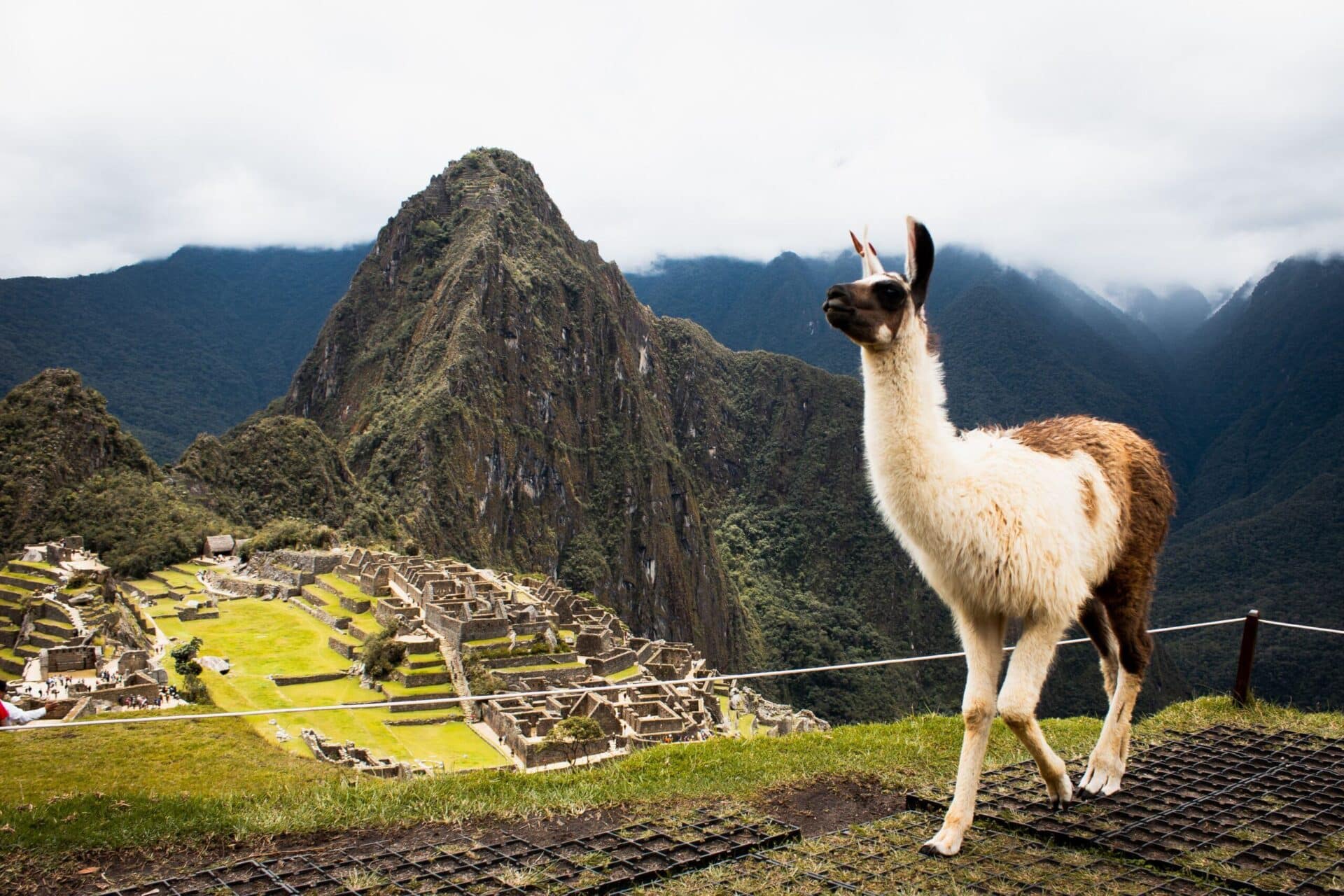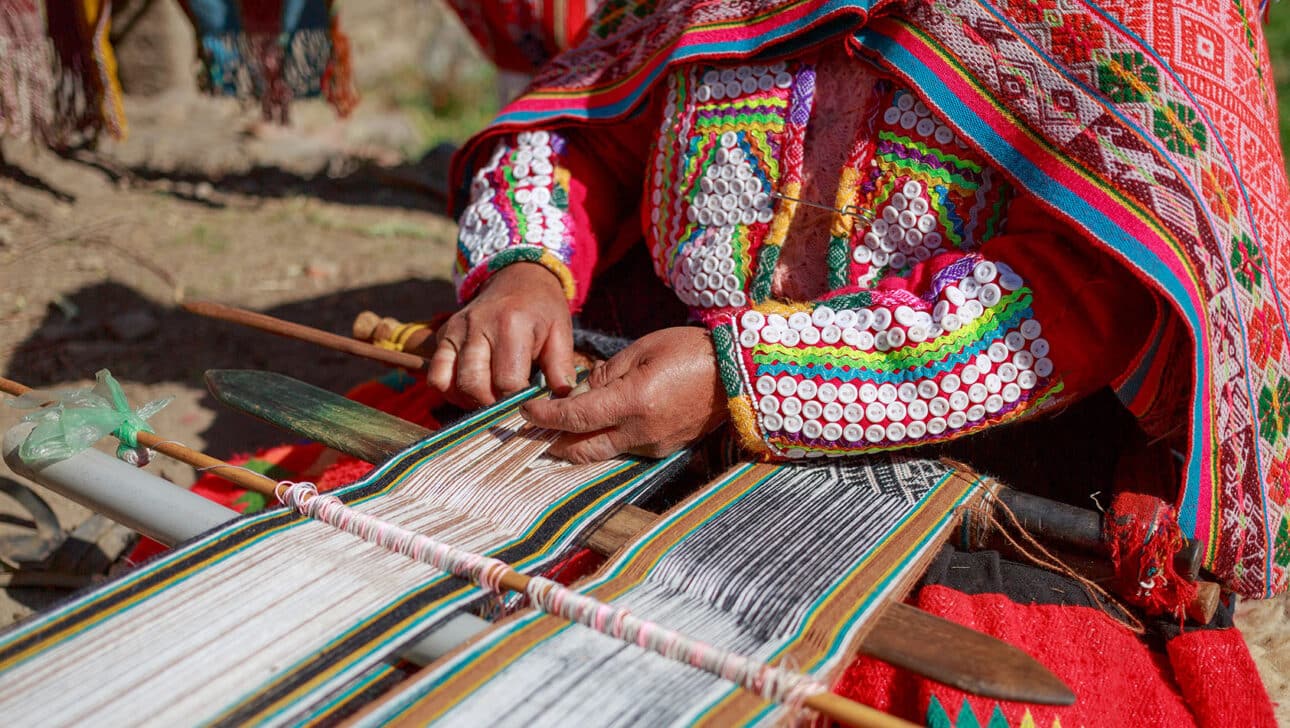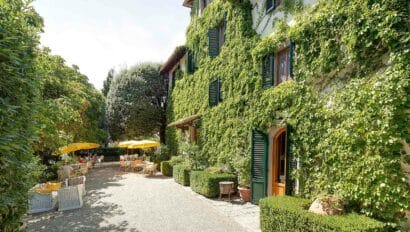Think about your commute to work. If you live in a big metro area like I do, you dread having to get up early, only to sit in traffic for 30 minutes, or maybe an hour. Imagine your commute involving a day-long hike over mountain trails to your workspace, where you’ll spend a couple of weeks before making that same trip back home, and then repeating that a week later. On a recent trip to Peru with Classic Journeys, I met someone who has been doing that very commute for years.
Meeting Peru’s Best Known Residents
In a quick game of word association, most visitors to Peru are going for Machu Picchu, of course. Some are going for the country’s best-known residents – the alpacas and the llamas. But I learned that our fuzzy friends are just a part of a remarkable tale of community, endurance, and artistry; one that very few visitors to Peru get to experience.
Is there anything more adorable than a baby llama? At the Awana Kancha ranch, located in Peru’s Sacred Valley, we fed llama and alpaca calves. Curious and friendly, the shaggy youngsters came right up to greet us. Edgard, our guide, explained that the animals are crucial to rural as well as urban life in Peru. Llamas are hardy and sure-footed, and are able to carry heavy loads over Peru’s rugged mountain trails. The smaller alpacas aren’t quite big enough to serve as cargo carriers. They are bred for their wool. As with sheep, their shaggy coats are sheered and used for blankets and clothing, keeping Peruvians warm and comfortable in the often-changeable mountain climate.
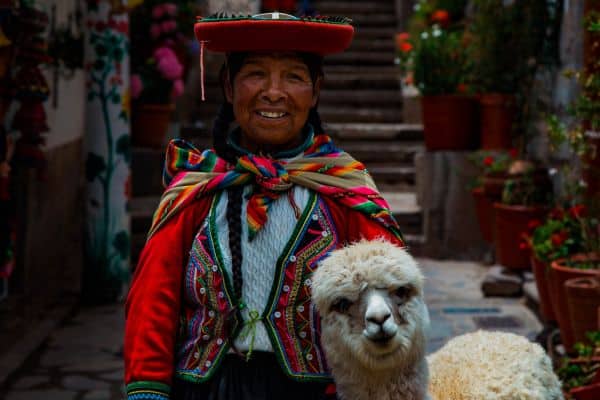
The Art of Peruvian Hand-Weaving
As if on cue, we caught a glimpse of a lone figure sitting on a grassy hill. It would have been hard to miss her – in contrast to the greens of the Peruvian mountain landscape, her bright, multi-colored wardrobe made her stand out. “That’s my friend, Tica”, Edgard told us. We went over to say hello. Tica is from the remote village of Q’eros. We struck up a conversation with her; and with Edgard translating, she gave us a fascinating look into the time-honored Peruvian tradition of hand-weaving.
Q’eros, Tica shared, is a village that’s stayed close to pre-modern Peruvian ways. Located high in the mountains, the villagers are mostly cut off from society. There, many of the men still practice shamanism, mysticism, and the ancient Quechua religion. They raise alpacas for wool and for food; because of the altitude – over 12,000 feet – the only crop that they’re able to grow is potatoes. Trade, then, is necessary to ensure that the villagers can obtain food, clothing, and other supplies needed to survive in the high Andes. Weaving has been part of the Quechua culture for thousands of years – it’s estimated that Quechua weavers have been creating textiles since 2500 BCE. And that, Edgard told us, is where the women come in.
Tica and the women of Q’eros have kept the ancient Inca and Quechua weaving traditions alive, creating the stunningly colored fabrics and clothing worn by Peruvian natives (and sought after by visitors). Tica was at the ranch to carry on those traditions; two weeks ago, she had left her two children in the care of her relatives, making the day-long walk down from the mountain. She lives at the ranch for three weeks at a time, working outside under a thatched roof, using only her hands, plus tools and methods that date back hundreds of years. In a week, she would make the long journey back up into the mountains to her home.
Carrying On Ancient Quechua Traditions
Edgard and Tica explained the process. Once a year, alpacas are sheered by hand. Their wool is then dried and hand-spun into yarn. Meanwhile, the work of dyeing begins. This is not an easy task, as the materials used in the traditional dyeing process are all found in Peru’s natural environment – derived from clay, plant life, even insects. The colors are all extracted with either simple hand tools, or with bare hands. From there, the yarns are dyed in large cauldrons over wood fires, a process that again can take hours depending on the desired hues and colors.
Once dried, the dyed yarns are ready for weaving. This painstaking process is done by hand on backstrap looms. Made from wood, bones, and strings, the backstrap loom is the oldest type of loom, dating to the Bronze Age, over two thousand years ago. Every weaver strives to create patterns that are unique and theirs alone. It’s said that the women weavers of the Andes start to learn their craft when they are around 4 years old; by the time they are 8, they should be able to weave basic belts. From there, they develop the skills needed to make blankets, ponchos, and other more complex items.
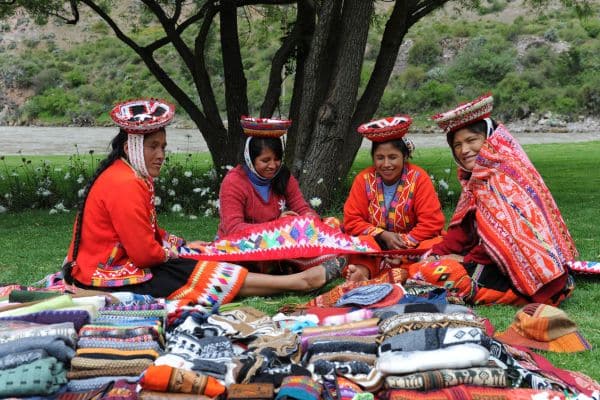
Coupled with the hard life of a Q’eros weaver – countless miles of hiking up and down difficult trails, weeks spent away from loved ones – it’s easy to think that there must be a better way for weavers like Tica to perform their craft. Edgard told us that while there’s a push to use pre-made synthetic dyes, weavers like Tica are holding fast to traditional methods, despite the hours of work involved in finding and processing these natural dyes. One reason is simple and understandable: weaving is the best way for Tica and the women of her community to preserve their heritage. Many visitors to Peru never experience the firsthand look at this artistry that Classic Journeys guests receive, so Classic Journeys is particularly proud to support Tica and her fellow craftswomen in their work. “When visitors buy these garments,” Edgard told us, “then the ancient techniques survive.” He’s right. When visitors purchase the items made by weavers like Tica, that money goes right back into their communities. The women of Q’eros gain economic empowerment, and their community benefits as the weaving trade helps to fund schools and other needed resources. By carrying on this ancient weaving tradition, Tica is helping her community endure and even to thrive.
